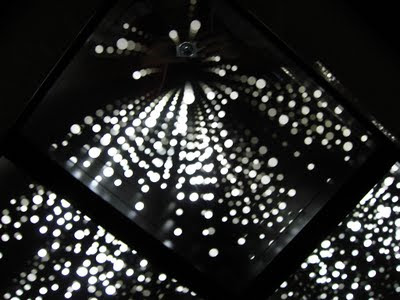A Secret 九字 Kuji for Defeating 100 Enemies
From Bujinkan Santa Monica by Michael
| Hidden Alcove at 戸定邸 Tojō-tei. photo by Michael Glenn |
「護攻虚変争精神不動」GoKoKyoHenSeiShinFudo
This kuji, or gokui, repels any method of capture or defeat. You protect yourself by changing the attack itself with an immovable spirit. This is the time to do or die. You are prepared for death, but you’d rather do the enemy in.
How do you do instead of die? In that single moment of life and death you remain unmoved in the middle. That middle place is the key to ninjutsu.
On a very hot day in June, I learned about this. The air was loud with the harmonic drone of 蝉 semi (cicadas). But we were training anyway. Hatsumi Sensei told us to train in accordance with the temperature.
Two opponents attacked and Soke slipped behind the first attacker. He did this while trapping the second guy in his own attack. Then Hatsumi asked the uke to give his impression of what just happened. The confused student described his inability to get a fix on Hatsumi Sensei as a target.
Soke replied that this is not the movement of sports or the “so called” martial arts. This is something far above that. This is true ninjutsu. Make your techniques transparent. Make them see through.
Hatsumi Sensei told us not to just punch on the surface, but to strike through the body. He said when your arm goes through their spine it makes the sign of the cross.
Soke gave us a warning
「九字を許すも十字を許すな」kuji are permitted but not juji.If you go beyond kuji and allow juji then you have “crossed the line.” Maybe you cross the line of life and death. You could end up facing 十王 Jū-ō the ten judges of the dead.
In Buddhism, there are nine states from Hell to Bodhisattva. The highest level, the tenth level, is becoming Buddha. But the 仏 hotoke (Boddhisatvas) are the souls of the dead, to be commemorated by their descendants.
I toweled the sweat away and scribbled my notes after training. What did I learn that day?
- Make yourself and your technique transparent;
- Go to the line but don’t cross it;
- Remain unmoved by life or death in that spot.
